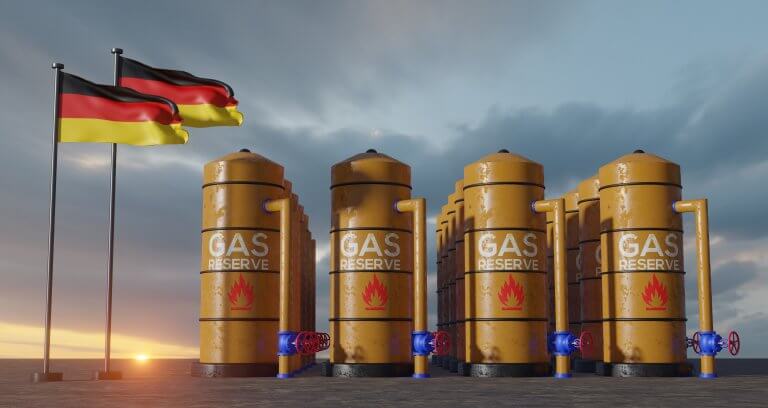
Mobilization in Russia: an omen of a total return to traditional conscription armies in contemporary Europe
On September 21, Russian President Vladimir Putin announced the beginning of the mobilization of reservists to participate in the conflict in Ukraine. It may seem that this is a temporary forced step, which indicates problems in the implementation of Russia’s military campaign plan, and that there are indeed difficulties. However, there is also a much more fundamental reason with a conscious return from “professional” army focused on special operations to traditional conscription army that existed in the era of World War I and World War II. It is precisely this kind of army that is best suited for large-scale armed clashes that will take place in the new system of a multipolar world, where competition between world leaders will from time to time enter hot phases.

After the collapse of the USSR and the end of the Cold War, the conscript army began to be demonized and labeled as archaic, tyrannical and ineffective. The peak of this PR campaign was Operation “Desert Storm”, where American “professionals” defeated the army of dictator Saddam Hussein. The Marines looked almost like supermen and gods against the “dirty and ragged” soldiers of the Iraqi army. To be fair, at the time they did not take into account the serious difference in the technical equipment of the armies, nor the fact that there was virtually no ground operation as such. But it was for a good cause – nothing was to call into question the total superiority of American “professionals”. The liberal postmodern society made the idea of a “professional” army a cult and an integral part of the very notion of a “democratic state”, where citizens handed over their security to a military corporation whose competence is beyond question and exercised their sacred right “not to serve”. Critics of this approach already pointed out in scenarios when an army is not directly connected to society, as it is the case with conscription, the army would be subordinate not to citizens, but to the “master” who paid for the activities of this “corporation”. Nevertheless it turned out that in addition to this political problem, such a “professional” army may not justify its name (we put this word in quotes for a reason), and also may not be able to perform some necessary combat tasks.
Already during the second war in Iraq and the operation in Afghanistan, American “professionals” clearly demonstrated that they could not defeat the Islamists and the Taliban once and for all. The United States and Russia, with complete technical superiority, still managed to defeat ISIS, but it was clear that it would not work with a more serious adversary. And for Russia, Ukraine turned out to be a serious opponent. Although Russia formally retains the draft, it was already on the way to building a “professional” army, and in Ukraine only contracted soldiers, not conscripts, fought from the beginning. It should be clearly understood that when we talk about a “professional” army, despite the positive sounding of this word, we mean its contractual way of formation, but not the quality of training or provision. In a real conflict, a “contract” soldier, having no real combat experience, differs little from a conscript, while a conscript with real combat experience greatly exceeds a “professional”. Many soldiers joined the “professional” armies with the deliberate conviction that they were going there to earn money, not to participate in a real armed confrontation. Of course, there are special forces units that have a real advantage, but they can be used effectively for special operations for example, to overthrow dictators in Africa. In a conflict where the opposing armies are roughly technically equal and the size of the armies is measured in hundreds of thousands, it is impossible to put special forces on every section of the front. A large number of medium-trained fighters i.e. conscripts, are therefore necessary.

In Ukraine, mobilization began back in 2014, and its army was conscripted and sufficiently large. It was thanks to a large numerical superiority of five to eight times that the Ukrainian army was able to conduct a successful offensive in the Kharkiv region, despite the fact that Russian units there had technical superiority and consisted of “professional” soldiers. Aware of the reason for this failure, the Russian leadership was prompted to reconsider the way it formed its army and switched to mobilizing its own citizens. For the average European, the possibility of being called up for military service and, even more so, to take part in an armed conflict is an existential horror. The average European is better off believing that the mobilization is caused by Putin’s occasional and temporary difficulties, and that this could never happen in Europe. However, it is already clear today that European countries, even with their technical advantage, which is sometimes imaginary, will not be able to resist such “conscript” countries as China, Iran, Turkey, and Russia. In the blissful 90’s, it seemed to many that in the happy world of globalism, the European armies would soon become a decorative element for participation in the parades. And the armies in European countries were indeed degrading and getting weaker, but already today the trends have changed – European leaders can’t help but understand how the world around them is changing. Back at the beginning of May, Chancellor Olaf Scholz said that Germany would soon create the largest conventional army in Europe among NATO member states. Already in early September, keeping pace with his German counterpart, President Emmanuel Macron promised to make France the first equipped army in Europe. Yes, there is still a long way to go before a conscription army in Europe, but those countries that stick too hard to the principles of “democracy” by not wanting to serve in their own army, have risks to serve in someone else’s, but the same conscription army.

